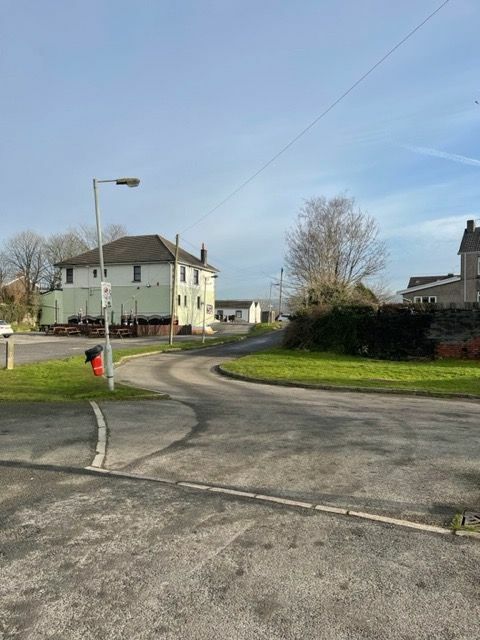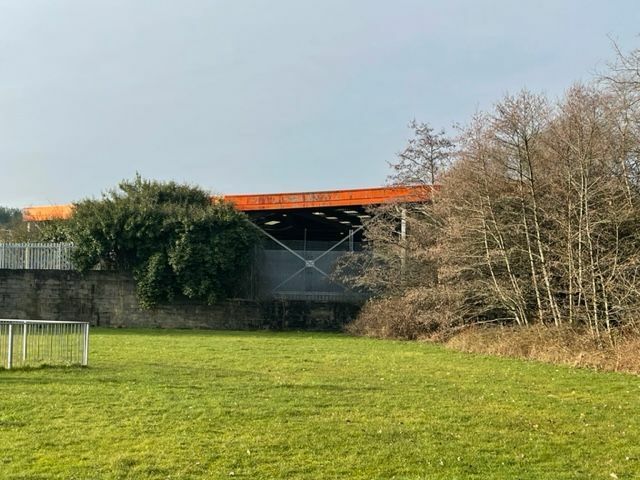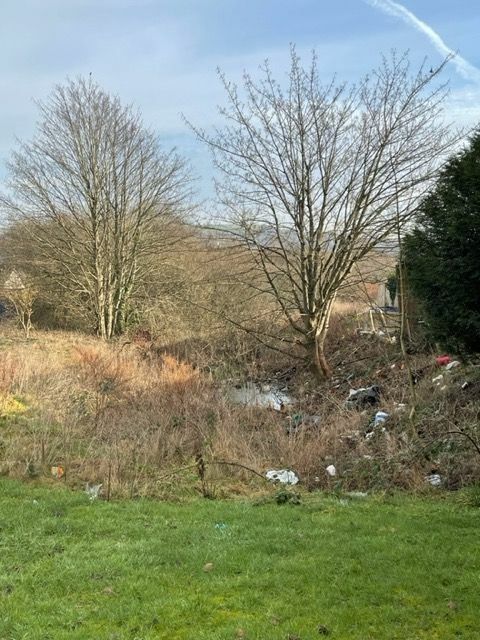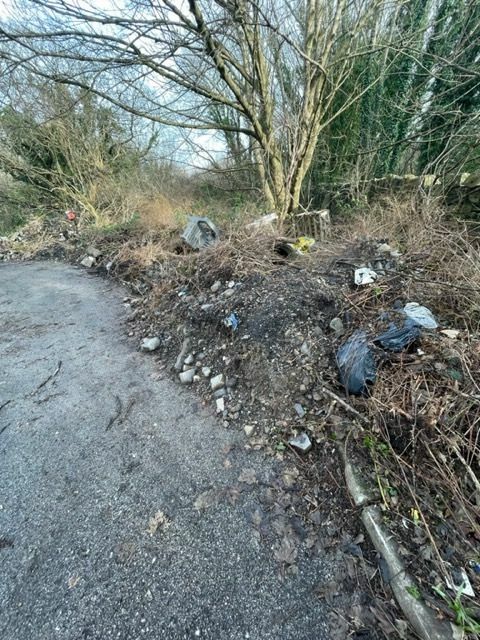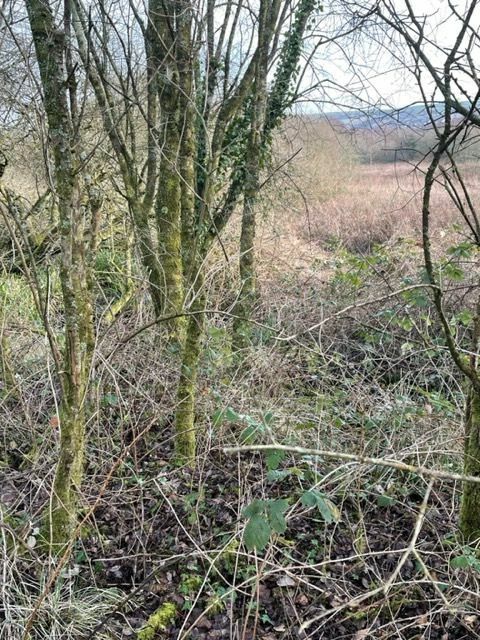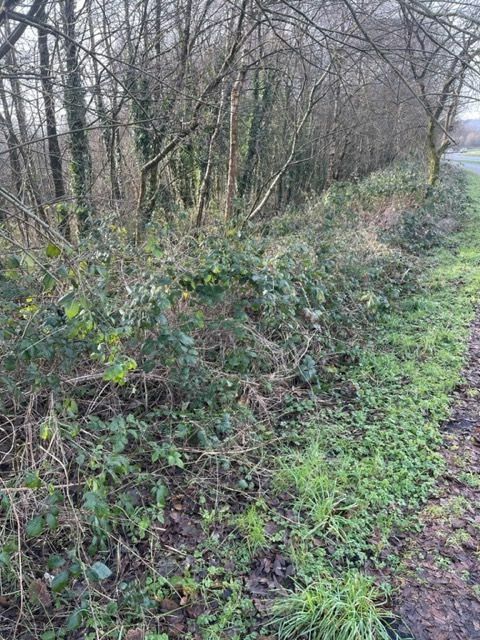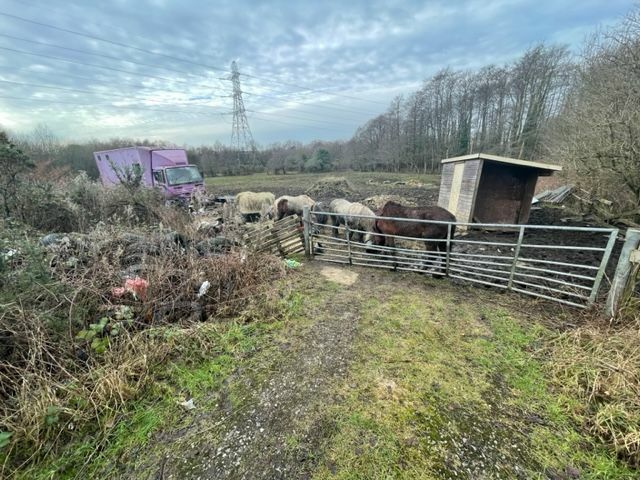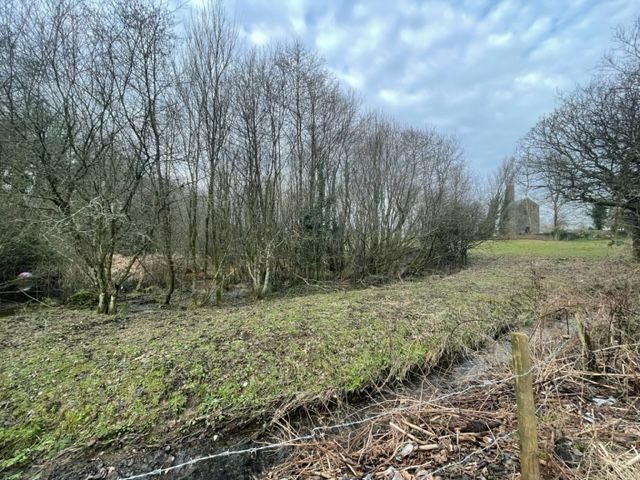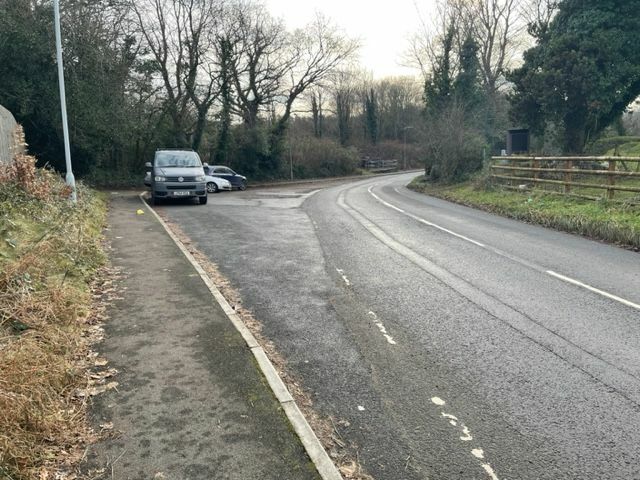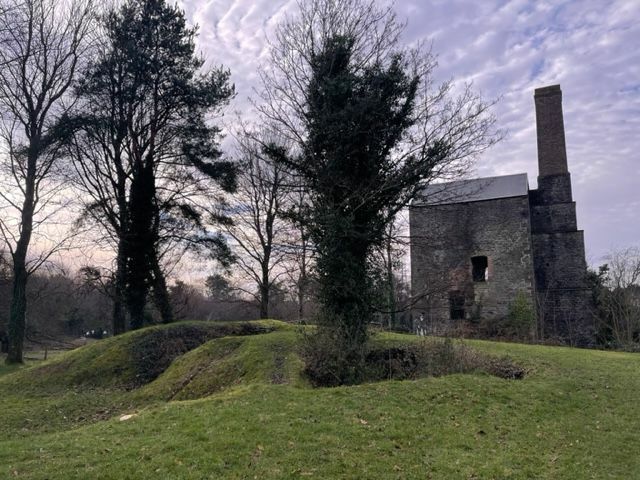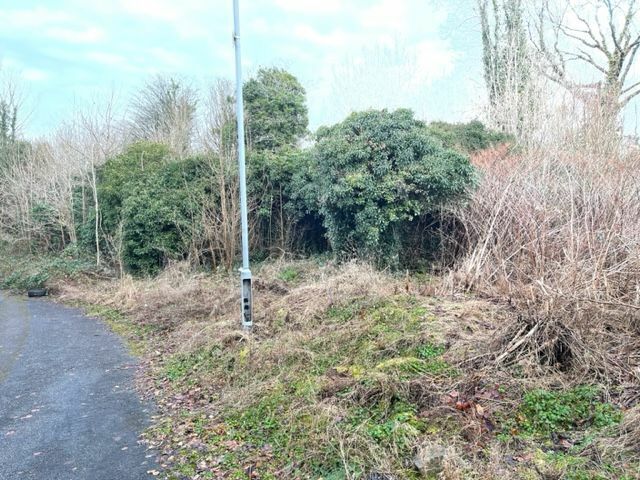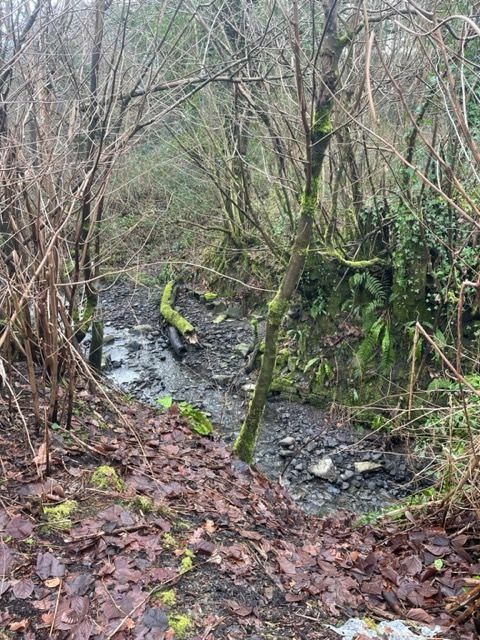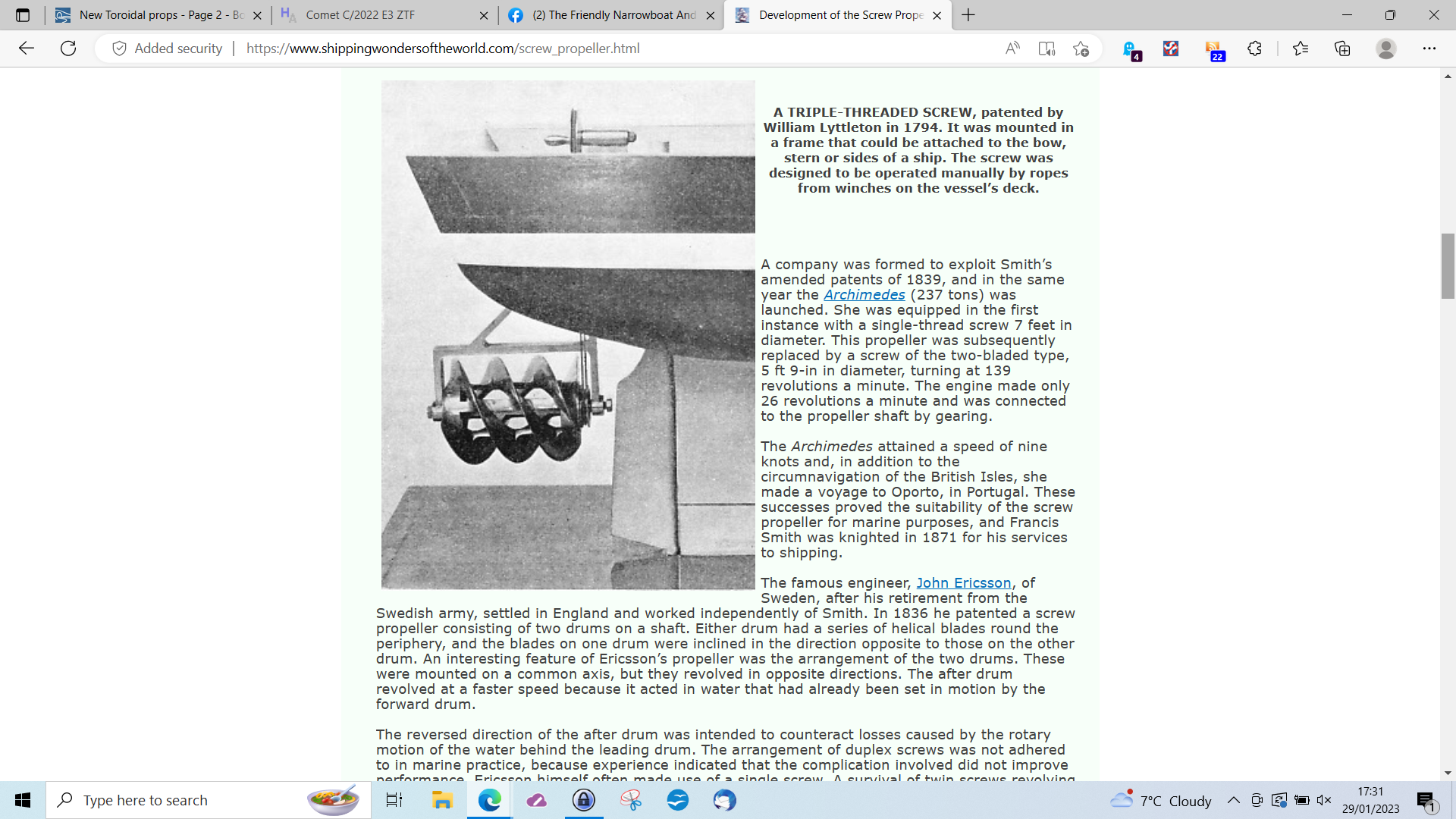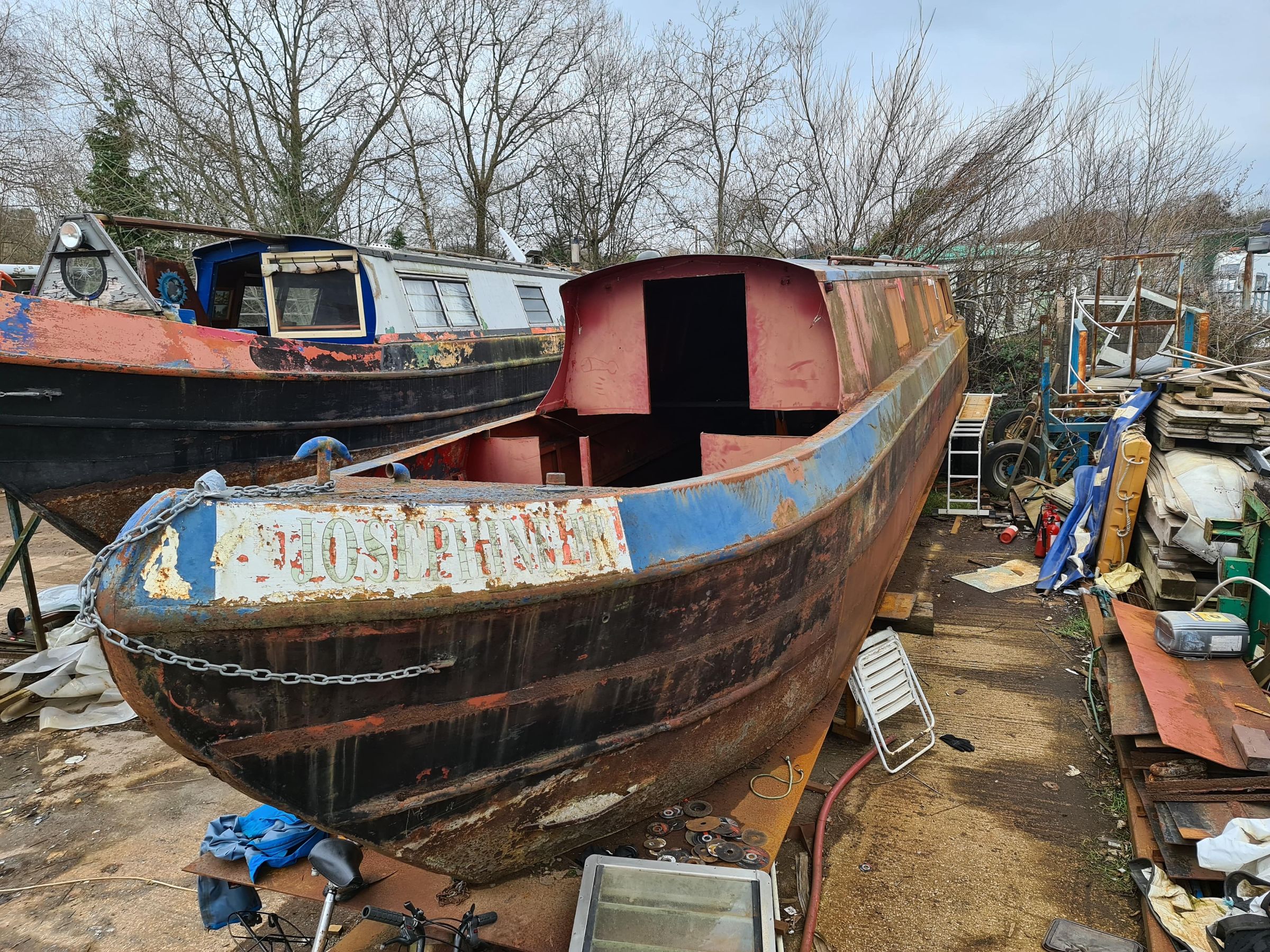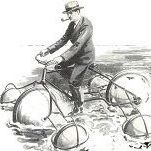More on Smith's Canal
I decided I wanted to know more about this remote canal, so travelled to Swansea last week to see what more could be found. The reality is that even where there should be remnants - because the canal hasn't been built over - it is remarkably difficult to get to the original line of the canal. From Llansamlet church eastwards to the starting point, the canal should be accessible and as it's the absolute middle of winter, there is minimum vegetation. But still it's almost impossible to quickly or easily access the line of the canal.
This is the Plough and Harrow pub, and looking east. The canal ran towards me along the tarmac (which is now the entrance to the Llansamlet Community Centre). The pub car park is to the left. There is a b&w photo of this scene and is the only photo I have seen of the canal fully in water, although without any boats.
This is now looking west from the south side of the community centre. The canal ran alongside the rough grass and the lower brick wall at the end is where the canal continued. Most of the next mile is covered by the Swansea Enterprise Park.
On the other side of Church Road in Llansamlet, looking east. I had hoped to walk this stretch towards the start of the canal. But it just wasn't possible. The fly-tipped rubbish is obvious. The land beyond doesn't seem to be used but access is tricky as there are few public footpaths. It's not even clear who owns the land. I'm not overly bothered about trespassing as long as I'm not damaging crops, fences, assets, etc. But physically it wasn't possible. The water can be seen here.
This is the route of a public bridleway (not just a footpath!) from the end of Tawe Road (off Peniel Green Road) and it goes north towards the new B4625. Completely impassable and no sign of a path. The wall on the right is the wall of the former Swansea Vale Railway. Long gone.
Getting to the canal from the north - the B4625 - is a lot easier although the path is obviously little used. The fly-tipping at the southern end might have something to do with it. The canal line is straight ahead along the line of the young trees, with marsh to the right, and this is heading NE. Ive learnt that on many disused canals, the trees tend to grow out of the former canal bed rather than the bank or the former towpath.
The canal crosses the B4625 here but no trace on either side beyond some small ridges.
The canal was crossed by the Swansea Vale Railway. However, as the canal was closed in 1852, I'm not even sure if there was a bridge over the canal. This is a field between the old railway embankment and the M4 embankment off to the right. In early 6" OS maps, there is clearly a line of marsh and even 'canal width' open water across this field, with the latter more or less where these ponies are standing.
The start of the canal was the Gwernllwynchwyth estate and the pits around it. The most likely end point (ignoring what Coflein record as they are clearly wrong) was Scott's Pit, seen here. The old engine house remains and can be seen on a rise in the middle right of the photo. The canal almost definitely ended in this copse in the field. It is possible that the canal continued just beyond the barbed wire at the lower edge of the photo. However, this seems to be on a slight rise whereas the copse is flat.
This is the road and parking opposite the Scott's Pit site (to the right). However, this odd road shape shape has been here since the earliest OS maps and must surely have something to do with the canal and/or local waggonways.
The engine house at Scott's Pit. There has been little excavations done to date.
The field to the immediate south of Scott's Pit with the copse beyond the frost on the far side of the field. The photo of the copse above was taken from the gap in the trees on the upper left.
An additional twist to this story is the Gwernllwynchwyth (try saying that to a taxi driver after a few pints) which is now completely ruined and overgrown with absolutely no attempt to even make it safe let alone any form of interpretation. The estate was the focal point of the coal estate, with pits scattered around. Smith's Canal (Smith bought the estate early on) was replaced and it is likely that the upper 0.75km was closed early on and a waggonway ran from the pits around Gwernllwynchwyth for about 500m to a 'new' terminal basin.
As a final treat (I will do an update on the Hafod-Morfa end of the canal in due course) this is part of an artificial water supply system known as Chauncey's Great Leat that supplied water from streams in the Gwernllwynchwyth estate to coal mines and early industry in Pentrechwyth several miles to the southwest, close to the Tawe. This arrangement doesn't make total sense because one immediately asks the question why not get water from the Nant y Fendrod or even the Tawe itself. Bricks and stone linings can be seen in the watercourse, but - as everywhere with this long-lost canal - it's so difficult to access.
There is no connection possible between Smith's Canal and the Swansea Canal. The former is on the eastern side of the Tawe, the latter alongside-ish on the western side.










